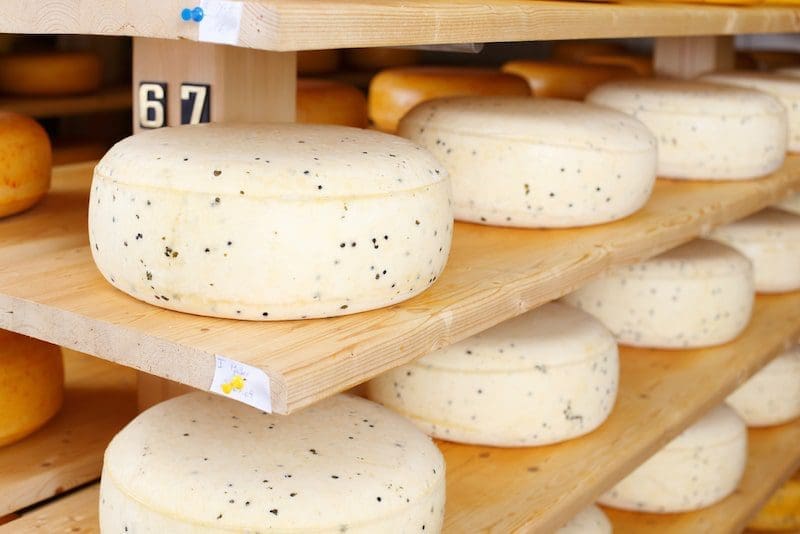Ah, cheese. The mere mention of the word is enough to make any foodie’s mouth water. A deliciously creamy or tangy accompaniment to a variety of meals, cheese has been around for thousands of years and continues to bring joy – and flavor – to our plates today. But what do we really know about this delightful food? To uncover the secrets behind the world of cheese, let’s take a closer look at its history, production process, and types of cheeses available around the globe. From brie from France, gorgonzola from Italy, and cheddar from England; you don’t need to be an expert in gastronomy to enjoy cheese!
Cheese Making
Making cheese is a fascinating process dating back thousands of years, with techniques varying from region to region. Whilst a lot of cheese making involves specialist equipment, many types of cheese can be made in your own kitchen. The primary ingredients are milk, salt, and a bacterial or microbial starter culture rennet, which can help separate the cheese curds from the whey.
The process starts by heating the milk, then adding the starter culture and rennet. Once the curds have formed, they must be cut into small pieces and heated up again, causing more whey to be separated from the curd. The next stage varies depending on the type of cheese.
Some cheese requires the curd to be shaped in cheese molds, which helps to drain more whey. Others are left free-form and are salted and left to dry to form a rind. Understanding the basics of the cheese-making process helps you to appreciate the range of flavors and textures that different cheeses offer.
Types of Cheese
There are countless varieties of cheese, each with its unique texture, color, and flavor. From the sharp, pungent taste of blue cheese to the milder, creamier flavor of brie or camembert, there’s a cheese to suit every palate.
Cheddar cheese, known for its tangy and rich taste, is a favorite among many cheese enthusiasts.
Cheeses like gouda and edam, on the other hand, are firmer and smoother, with a slightly nutty flavor.
Another popular option is parmesan, which is often grated over pasta dishes and salads for its salty and sharp taste.
Whatever your preference may be, hampers from The Cheese Wedge Company, or any other company for that matter, are sure to satisfy your cheese cravings. Their selection includes a wide range of cheeses from across the globe, ensuring there is something for everyone to enjoy.

Aging Process
Aging is a process that can dramatically transform the flavor profile of foods, and cheese is no exception. Proper aging of cheese is a delicate balance of time, temperature, humidity, and sometimes even bacteria. During the aging process, the cheese is largely left to its own devices, as the wheels or blocks mature slowly in carefully controlled environments. For many varieties of cheese, this process lasts anywhere from a few months to a few years.
As cheese ages, its texture changes, becoming more crumbly or even gritty. However, it is the flavor that is most profoundly affected by aging. During the process, various chemical reactions occur, breaking down molecules and creating new compounds that add to the cheese’s complexity and depth.
As the cheese aging process continues, it develops notes of nuttiness, sweetness, and even a hint of earthiness, creating a flavor profile that is truly unique. While some people may prefer the taste of young, unaged cheese, there’s no denying that proper aging unlocks the full flavor potential of this beloved food.
Storage Tips
To ensure your cheese lasts longer and tastes delicious, it is important to store it correctly. For soft and creamy varieties such as brie or camembert, wrap them loosely in parchment or wax paper before storing them in the refrigerator’s cheese drawer. This allows them to breathe while still protecting them from drying out or absorbing other flavors.
For harder and aged cheeses such as cheddar or gouda, wrap them tightly in cling film or plastic wrap and store them in the refrigerator. This not only helps prevent dehydration and mold growth but also slows down the oxidation process that causes some harder cheeses to turn rancid.
Finally, for blue cheeses such as gorgonzola or Roquefort, it’s important to store them separately from other cheeses as they tend to be quite pungent and can easily transfer their flavor and aroma to milder cheeses. Wrap them tightly in foil or plastic wrap. Store them in a sealed container in the refrigerator. Remove them from the fridge about 30 minutes before serving. This allows them to come to room temperature. It also helps them fully develop their complex flavor. You can keep your cheese fresh for a longer time by using these straightforward storage tips.
Pairing Ideas
There’s nothing quite like the perfect cheese pairing to take your taste buds on an unforgettable culinary journey. First, try combining cheese with wine. For those who love tangy feta, try pairing it with sweet dried apricots or a savory tomato and basil spread. When it comes to sharp cheddar, consider serving it alongside juicy green grapes or a drizzle of honey.
Creamy brie pairs wonderfully with tart apples and a sprinkle of smoked almonds. Blue cheese lovers might want to try pairing it with sweet fig jam or a drizzle of balsamic glaze. And for those who prefer a nutty gouda, serve it with a crisp wheat beer or a side of salted caramel popcorn. No matter your cheese preference, there’s undoubtedly a food pairing that will elevate your snacking experience to new heights.
Health Benefits

Cheese, perhaps one of the most beloved and versatile foods in the world, is not only a tasty treat, but it can also be a surprisingly nutritious addition to one’s diet. For starters, cheese is an excellent source of high-quality protein and contains all of the essential amino acids that your body needs to build and repair tissues. In addition to this, cheese is also high in calcium, a mineral that is essential for strong bones and teeth.
If you’re looking to boost your vitamin intake, cheese has you covered as well – it’s an excellent source of vitamins like vitamin A, vitamin B12, and vitamin K2, all of which play important roles in maintaining good health. Finally, many types of cheese are also rich in healthy fats. These include omega-3 fatty acids. Omega-3s have been linked to a host of health benefits. They help reduce inflammation in the body. They also support brain function. Just remember, when you have your favorite cheese, you’re not only enjoying its delicious taste but also benefiting your body.
Cheese is an amazing culinary addition that can be enjoyed in a multitude of ways. Once you realize how much flexibility there is in making dishes with cheese, you may find yourself asking for seconds!


